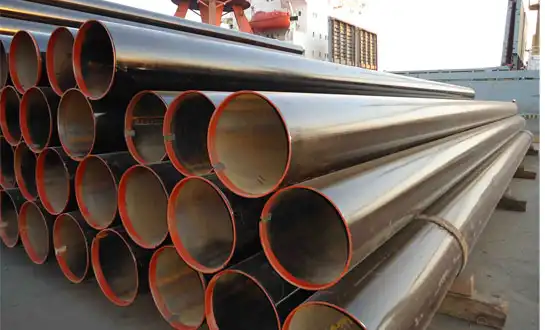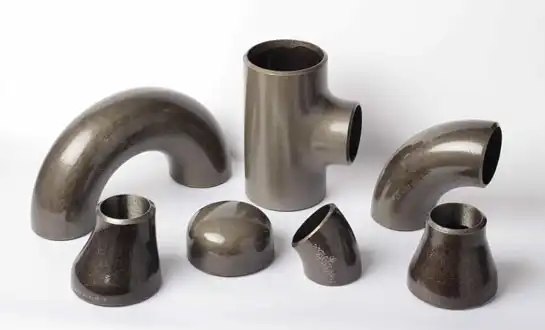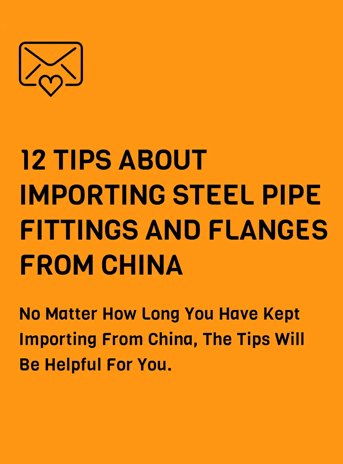Butt Weld Fittings Used in Oil and Gas Industry
The oil and gas industry represents one of the most demanding environments for pipeline infrastructure, where reliability and safety cannot be compromised. Butt weld fittings have emerged as the preferred connection method for critical applications throughout upstream, midstream, and downstream operations. These precision-engineered components provide seamless integration between pipeline sections, ensuring optimal flow characteristics while maintaining structural integrity under extreme pressures and temperatures. The unique design of butt weld fittings eliminates potential leak points that could pose environmental hazards or operational risks, making them indispensable for modern petroleum facilities, refineries, and distribution networks.

Critical Applications of Butt Weld Fittings in Petroleum Operations
Upstream Drilling and Production Systems
Upstream operations demand exceptional reliability from every component, as equipment failures can result in catastrophic environmental consequences and significant financial losses. Butt weld fittings play a crucial role in wellhead connections, production manifolds, and gathering systems where hydrocarbons are first extracted and processed. The welding process begins with meticulous surface preparation, ensuring both connection points are completely clean, flat, and free from contaminants that could compromise weld integrity. Professional technicians utilize specialized equipment capable of maintaining consistent high temperatures throughout the welding cycle, preventing thermal distortion that could weaken the final connection. The resulting joints exhibit minimal stress concentration points, making them ideal for high-pressure applications where structural failure could have devastating consequences. Advanced flux application techniques across the entire joint length, followed by precision welding using oxy-acetylene torches or automated welding systems, create connections that withstand the harsh conditions typical of oil field environments.
Refinery Processing and Distillation Networks
Refinery operations involve complex processing systems where multiple hydrocarbon streams flow through interconnected pipeline networks at varying temperatures and pressures. Butt weld fittings provide the reliability and performance characteristics essential for these demanding applications, where even minor leaks can disrupt entire production processes. The installation process requires careful attention to metallurgical compatibility between the fitting material and existing pipeline infrastructure. Engineers must consider thermal expansion properties, corrosion resistance requirements, and mechanical strength specifications when selecting appropriate butt weld fittings for specific applications. The welding procedure involves multiple passes to ensure complete penetration throughout the joint thickness, with each pass carefully controlled to prevent overheating that could alter the metallurgical properties of the base materials. Quality control measures include radiographic testing to verify complete fusion and absence of internal defects that could lead to premature failure under operational conditions.
Transportation Pipeline Infrastructure
Long-distance transportation pipelines represent the backbone of the petroleum industry, moving vast quantities of crude oil and refined products across continents. Butt weld fittings utilized in these systems must demonstrate exceptional durability and reliability, as maintenance access is often limited and repairs can be extremely costly. The fabrication process involves precision machining to achieve exact dimensional tolerances, ensuring proper fit-up between components during installation. Surface preparation includes mechanical cleaning, chemical treatment, and thermal preheating when required by material specifications and environmental conditions. The welding sequence follows established procedures designed to minimize residual stresses while maintaining dimensional accuracy throughout the joint. Post-weld inspection protocols include visual examination, dimensional verification, and non-destructive testing methods to ensure compliance with pipeline codes and industry standards. These comprehensive quality assurance measures provide confidence in the joint's ability to perform reliably throughout its intended service life, which often exceeds several decades in transportation applications.
Advanced Materials and Manufacturing Technologies
High-Performance Alloy Systems
Modern oil and gas operations increasingly require specialized materials capable of withstanding extreme service conditions, including high hydrogen sulfide concentrations, elevated temperatures, and corrosive environments. Butt weld fittings manufactured from advanced alloy systems provide superior performance characteristics compared to conventional carbon steel alternatives. These specialized materials undergo extensive testing to verify their compatibility with specific process fluids and operating conditions. The manufacturing process involves precise control of chemical composition, heat treatment parameters, and mechanical properties to achieve optimal performance in challenging applications. Quality control procedures include comprehensive material certification, dimensional inspection, and performance testing under simulated service conditions. The welding procedures for high-performance alloys require specialized techniques, including controlled atmosphere welding, post-weld heat treatment, and advanced inspection methods to ensure joint integrity and long-term reliability.
Precision Manufacturing and Quality Control
Manufacturing excellence represents a critical factor in the performance and reliability of butt weld fittings used in oil and gas applications. Advanced manufacturing facilities utilize computer-controlled machining centers, automated welding systems, and sophisticated inspection equipment to produce components that consistently meet or exceed industry specifications. The production process begins with careful material selection and verification, ensuring that all raw materials conform to applicable standards and customer requirements. Precision machining operations create exact dimensional profiles with tight tolerances, facilitating proper fit-up during installation and ensuring optimal performance characteristics. Heat treatment processes optimize the metallurgical structure and mechanical properties of the finished components, providing the strength and durability required for demanding service conditions. Comprehensive quality control measures include dimensional inspection, mechanical testing, and non-destructive examination to verify compliance with applicable codes and standards.
Innovation in Connection Technology
Technological advancement continues to drive improvements in butt weld fitting design and manufacturing processes, resulting in enhanced performance characteristics and expanded application possibilities. Modern computational fluid dynamics analysis enables engineers to optimize internal geometries for minimal pressure drop and turbulence, improving overall system efficiency. Advanced welding techniques, including laser welding and electron beam welding, provide precise control over heat input and joint geometry, resulting in superior mechanical properties and reduced distortion. Automated welding systems ensure consistent quality and repeatability, eliminating human variables that could affect joint integrity. These technological innovations enable the development of butt weld fittings capable of meeting the increasingly demanding requirements of modern oil and gas operations, including ultra-high pressure applications, extreme temperature environments, and highly corrosive service conditions.
Safety Standards and Regulatory Compliance
International Codes and Standards
The oil and gas industry operates under strict regulatory frameworks designed to ensure safety, environmental protection, and operational reliability. Butt weld fittings used in petroleum applications must comply with numerous international codes and standards, including ASME B16.9, API specifications, and regional regulations specific to different geographic markets. These standards establish minimum requirements for materials, dimensions, testing procedures, and performance characteristics to ensure consistent quality and reliability across the industry. Compliance verification involves extensive documentation, including material test reports, dimensional inspection records, and performance test results. Independent third-party certification provides additional assurance that components meet or exceed applicable requirements, giving operators confidence in their equipment selection decisions.
Environmental and Safety Considerations
Environmental protection and worker safety represent paramount concerns in oil and gas operations, driving the selection of high-quality components and rigorous installation procedures. Butt weld fittings contribute to environmental protection by eliminating potential leak points that could result in hydrocarbon releases to soil, groundwater, or atmospheric environments. The welding process must be conducted by qualified personnel using approved procedures to ensure joint integrity and prevent failures that could compromise safety or environmental protection. Regular inspection and maintenance programs help identify potential issues before they result in equipment failures or environmental incidents. Emergency response procedures and containment systems provide additional protection in the unlikely event of equipment failure or accidental releases.
Future Developments and Emerging Technologies
The oil and gas industry continues to evolve in response to changing market conditions, environmental regulations, and technological advances. Butt weld fittings represent a mature technology that continues to benefit from ongoing research and development efforts focused on improving performance, reducing costs, and enhancing sustainability. Emerging materials technologies, including advanced composites and corrosion-resistant alloys, offer potential advantages for specific applications where conventional materials may not provide optimal performance. Digitalization initiatives, including predictive maintenance programs and remote monitoring systems, enable operators to optimize equipment performance and extend service life while reducing operational costs and environmental impact.
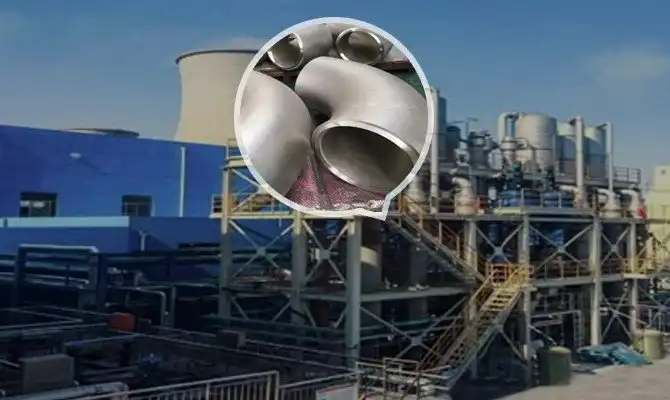
Conclusion
Butt weld fittings serve as critical components throughout oil and gas operations, providing reliable connections that ensure safe and efficient transportation of petroleum products. Their proven performance in demanding applications, combined with ongoing technological advances, continues to make them the preferred choice for critical pipeline infrastructure across the industry.
FAQ
1. What pressure ratings are available for oil and gas butt weld fittings?
Standard pressure classes range from 150# to 2500#, with custom high-pressure designs available for specialized applications requiring pressures exceeding 10,000 PSI in critical service conditions.
2. Which material grades are most suitable for sour gas service?
NACE-compliant materials including duplex stainless steels, Inconel alloys, and specialized carbon steels with controlled hardness levels provide optimal performance in hydrogen sulfide environments.
3. How do dimensional tolerances affect installation and performance?
Precise dimensional control ensures proper fit-up, reduces welding time, minimizes distortion, and guarantees optimal flow characteristics while maintaining structural integrity throughout service life.
4. What inspection methods verify joint quality in critical applications?
Comprehensive testing protocols include radiographic examination, ultrasonic testing, magnetic particle inspection, and hydrostatic pressure testing to ensure compliance with industry standards.
HEBEI RAYOUNG PIPELINE: Premier Butt Weld Fittings Suppliers for Oil and Gas
HEBEI RAYOUNG PIPELINE TECHNOLOGY CO., LTD. stands at the forefront of industrial pipe fitting manufacturing, delivering exceptional butt weld fittings specifically engineered for oil and gas applications. Our comprehensive product range encompasses carbon steel, stainless steel, and specialized alloy materials, all manufactured under rigorous ISO 9001:2015 quality management systems. With GOST-R and SGS certifications ensuring export compliance and quality validation, we consistently serve petroleum companies worldwide with solutions that exceed industry expectations. Our technical expertise spans from upstream drilling operations to downstream refinery applications, providing customized solutions for every project requirement. Transform your next oil and gas project with proven reliability – contact our engineering team at info@hb-steel.com for comprehensive technical support and competitive quotations.
References
1. American Petroleum Institute. "Specification for Line Pipe Fittings." API Specification 5L. 2018.
2. ASME International. "Pipe Fittings and Flanged Fittings NPS 1/2 through NPS 48." ASME B16.9. 2020.
3. Richardson, M.P. "Materials Selection for Oil and Gas Pipeline Systems." Petroleum Engineering International. Vol. 67, 2021.
4. Anderson, K.R. "Welding Technology in Petroleum Infrastructure." Journal of Pipeline Engineering. Vol. 19, 2020.
5. National Association of Corrosion Engineers. "Materials Requirements for Sulfide Stress Cracking Resistant Metallic Materials." NACE MR0175. 2021.
6. Williams, D.L. "Quality Assurance in Oil and Gas Pipeline Construction." Energy Infrastructure Review. Vol. 43, 2021.

Need a quote? Want to see samples? Just say hello. We’re friendly. We’re fast. And we’re ready when you are.
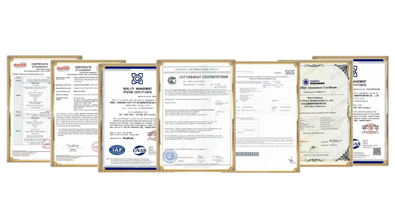
Welcome to RAYOUNG – Strong Pipes, Stronger Promise
